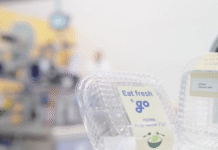By: Abhishek Waghmare
There would hardly be any Indian who does not remember the advertisement in the 1990s under operation flood with the lyric “Doodh hai wonderful”. It was to popularize milk across the country’s demographics by showing a schoolgirl, a bodybuilder, and an aged couple enjoying milk. It was prescient in the sense that milk production and consumption was more than twice in two decades.
But something unusual happened in 2017-18. The amount spent on milk and milk products dropped by 10%. While households, hotels, and halwai shops spent Rs 60,000 crore on milk and milk products in 2016-17, consumption expenditure reduced to Rs 54,000 crore in 2017-18, the data released by the National Statistical Office (NSO) show.
While this is a 10% drop in nominal terms, there is a bigger decline of nearly 14% in real terms (at 2011-12 prices) too – from Rs 41,000 crore to Rs 35,300 crore.
Experts and official spokespersons have varied interpretations of the data. While some said falling farmer or laborer incomes accounted for this, according to others, global milk prices, which had tanked that year, made milk cheaper in India, and the amount of consumption did not go down.
Himanshu, who teaches economics at Jawaharlal Nehru University, said this pointed to a grim situation, and stagnant incomes of farmers and laborers were the reason. “This indicates that the poorest (lowest-income households) did cut down on essential items in that year, which succeeded demonetization,” he told Business Standard.
His independent analysis of the NSO data shows that incomes could have dropped in 2017-18. Pronab Sen, former chief statistician of India called this ‘very serious’ because it indicated crashing incomes.
Devendra Shah, chairman of Ahmedabad-based Parag milk Foods, told Business Standard that production and consumption had risen in that year. “The number appear surprising because they do not match the ground reality,” he said.
About 40% of the milk produced in India is consumed in villages, and the rest (60%) is marketed, he added.
International milk prices had crashed to a multi-year low nearing US$1600 (approximately Rs 1,15,000) for a ton in 2017. The biggest milk player in the country, Amul, said that the drop in consumer spending on milk might have entirely to do with the unorganized sector groups that market and distribute milk in less urbanized regions.
“About two-thirds of the milk market is unorganized. A supply glut in that market could have resulted in prices dropping to an extent that overall spending on milk and products declined,” R S Sodhi, managing director, Amul said.
While organized and branded retail prices of milk are administered to ensure remunerative prices for farmers, the unorganized sector responds to the impulse of the domestic market, which is heavily influenced by global milk (or milk powder) prices.
Some experts pointed out a very small proportion of milk output went into processing, to be converted into or other processed food format, and not consumed in liquid form. They said if a considerable proportion of milk went into processing, that would have partially explained the decline in the value of the milk consumed. Business Standard’s queries to the National Dairy Development Board (NDDB), the central institution that led the white revolution ad regularly monitors the dairy sector in the country, remained unanswered for two weeks.
* Republished with permission from the author and the Business Standard
IndiFoodBev — authentic, impactful and influential
An English-language food and beverage processing and packaging industry B2B platform in print and web, IndiFoodBev is in its third year of publication. It is said that the Indian food and beverage industries represent approximately US$ 900 billion in revenues which implies more than 20% of the country’s GDP. Eliminating the wastage on the farmside can help to deliver more protein to a higher number of the population apart from generating sizable exports. The savings in soil, seeds, water, fertilizer, energy and ultimately food and nutrition could be the most immense contribution that country is poised to make to the moderation of climate change.
To improve your marketing and grow sales to the food and beverage processing and packaging industry, talk to us. Our research and consulting company IppStar [www.ippstar.org] can assess your potential and addressable markets in light of the competition. We can discuss marketing, communication, and sales strategies for market entry and growth.
Suppliers and service providers with a strategy and budget for targeted marketing can discuss using our hybrid print, web, video, and social media channels to create brand recognition linked to market relevance. Our technical writers are ready to meet you and your customers for content.
The second largest producer of fruit and vegetables in the world is continuously expanding processing capacities and delivery systems with appropriate innovative technologies. We cover product and consumer trends, nutrition, processing, research, equipment and packaging from farm to thali. Get our 2025 media kit and recalibrate your role in this dynamic market. Enhance your visibility and relevance to existing markets and turn potential customers into conversations. Ask for a sample copy of our bi-monthly in print or our weekly IndiFoodBev eZine each Wednesday.
For editorial info@ippgroup.in — for advertisement ads1@ippgroup.in and for subscriptions subscription@ippgroup.in
Naresh Khanna – 10 February 2025
Subscribe Now











